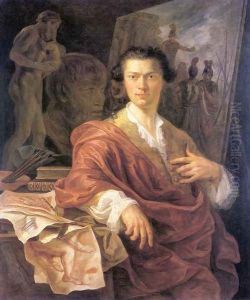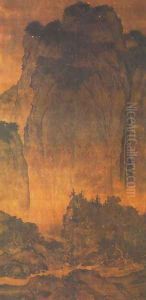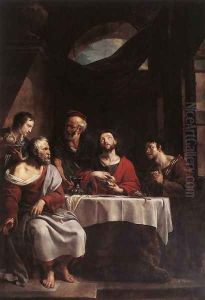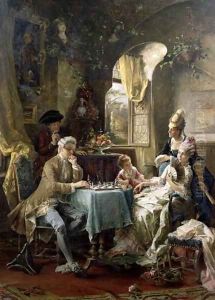Willem Herreyns Paintings
Willem Herreyns was a Flemish painter and art teacher born on August 10, 1743, in Antwerp, Belgium, which was then part of the Austrian Netherlands. He was known for his contributions to religious and historical painting, and he became an influential figure in the Antwerp art scene during the late 18th and early 19th centuries.
Herreyns received his early artistic training from his father, who was also a painter. He later studied at the Royal Academy of Fine Arts in Antwerp, where he honed his skills and developed a strong foundation in the classical tradition. His early work was marked by a baroque influence, which was prevalent in Flemish art during that period.
In 1780, Herreyns became a director of the Academy of Antwerp. His leadership coincided with a period of significant change in the art world, as the neoclassical style began to gain prominence. He played a key role in reforming the academy's curriculum to incorporate the neoclassical ideals of simplicity and grandeur, which were derived from the art of ancient Greece and Rome. This shift had a lasting impact on the training of artists in the region.
During the French Revolutionary Wars, when the French occupied the Austrian Netherlands, Herreyns was forced to close the academy. However, he continued to teach privately and was instrumental in re-establishing the institution, which had been renamed the Imperial and Royal Academy of Fine Arts, after the political turmoil had subsided.
Willem Herreyns' body of work includes large-scale religious paintings, which can still be found in various churches in Antwerp and other towns in Belgium. He also painted historical subjects and was known for his portraits. Herreyns' style evolved over the years, reflecting the transition from baroque to neoclassicism in European art.
Herreyns' contributions to art were not limited to his paintings; his impact as an educator was substantial. Many of his students went on to become prominent artists in their own right, spreading the neoclassical style that Herreyns had championed.
Willem Herreyns passed away on August 10, 1827, in Mechelen, Belgium. His legacy endures through his artworks and the generations of artists he influenced during his tenure as a teacher. He is remembered as an important figure in the transition of Flemish art from the baroque to the neoclassical era.



